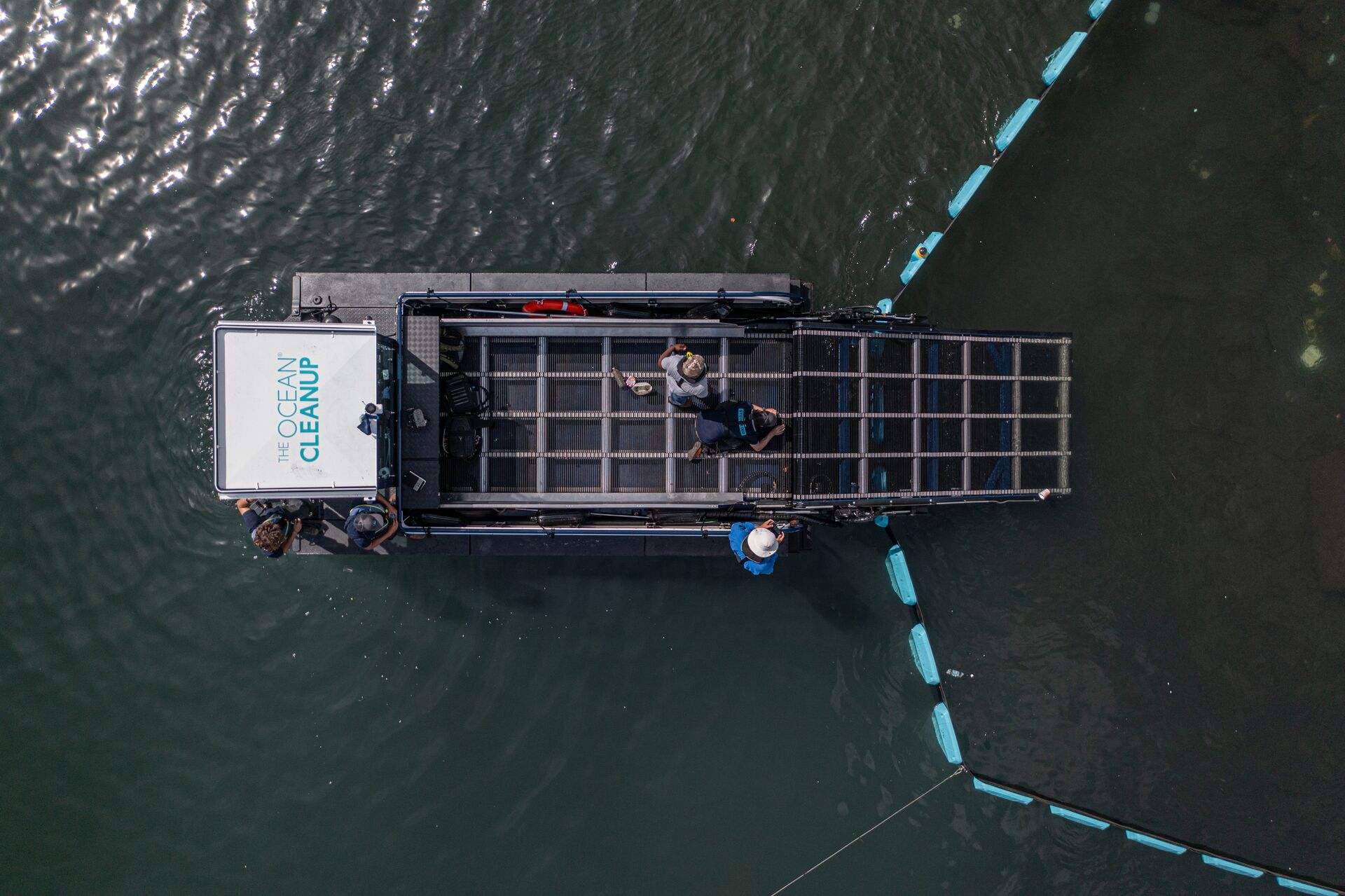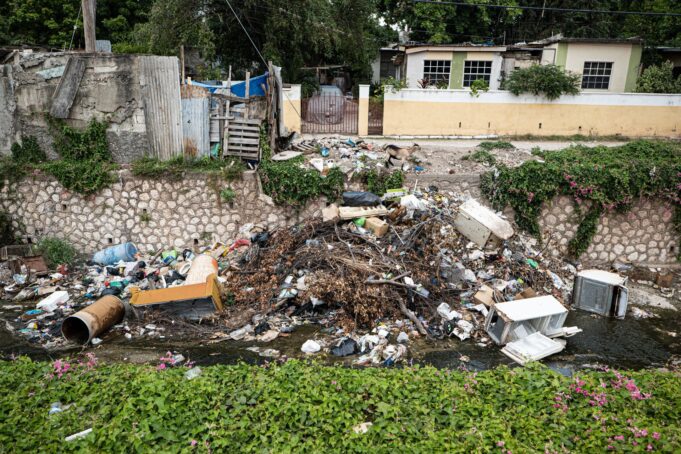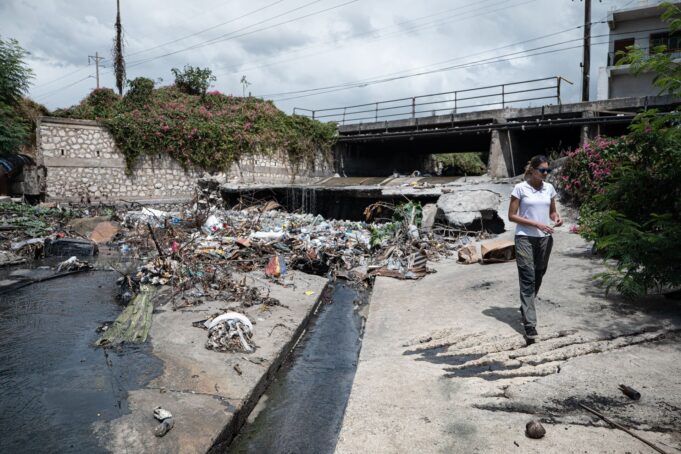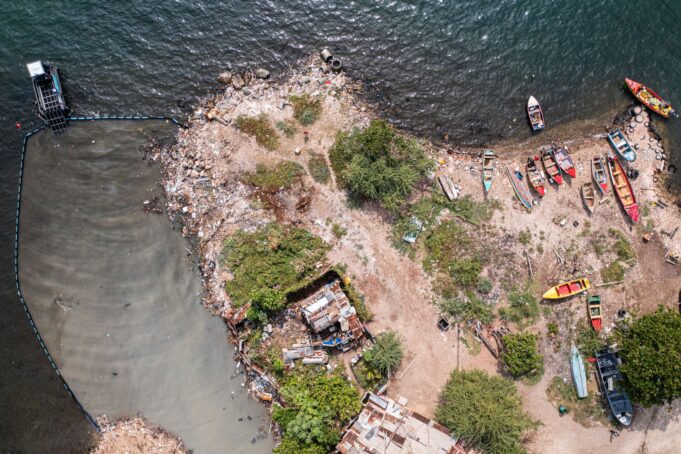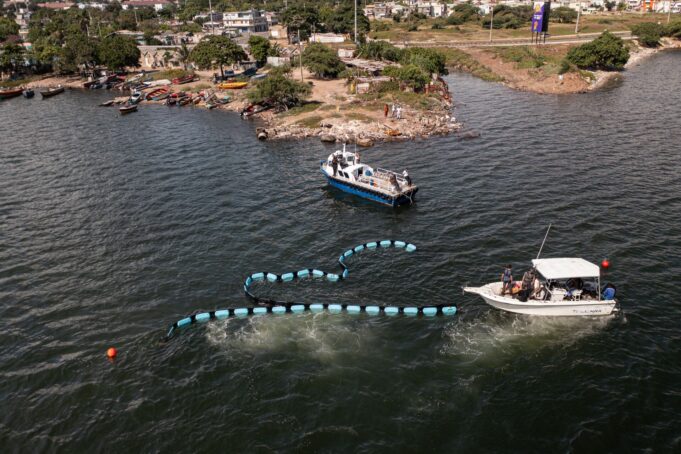On the southern coast of Jamaica we are working to trap urban plastic debris and waste before it can enter the Atlantic Ocean, starting with containment points along the Kingston Harbour coastline, and eventually within Hunt’s Bay.
Long an eyesore affecting the health and welfare of communities, both the inland pile-up and flow of debris into regional bodies of water are hitting new tipping points. Repercussions are altering the environment, affecting local water conditions, extending into precious mangrove forests and reducing economic value that some populations derive when a healthy coastline is lost — notably fishermen. Debris has been building for years, contributing to today’s severely clogged waterways. In recent years, the situation has caused damage to infrastructure.
Insight Through Understanding
To better understand conditions in the region, we used direct analysis and observation plus community knowledge collected by partners GraceKennedy Foundation and Clean Harbours Jamaica. GraceKennedy Foundation is one of the Caribbean’s largest community service groups. The Foundation is leading ongoing education and outreach, with one of its goals being to protect the mangroves. The Clean Harbours Jamaica organization oversees restoration of natural harbors, gullies and streams on the island. Both organizations have been able to share with us valuable insight into conditions that transpire during both the rainy and dry seasons. The GraceKennedy team will also oversee volunteer efforts for manual cleanup of the gullies.
Whereas our cleanup plans initially anticipated deployment of an Original Interceptor™ in one gully, we have since adjusted course. Based on findings, we concluded that individually customized solutions better address conditions at each of the 11 cleanup venues. We plan to deploy our newly developed Interceptor™ Barrier, paired with one or more Interceptor™ Tenders. By strategically placing barriers, either at the mouth of or within a gully or conduit, our goal is to contain floating debris and prevent it from reaching the ocean. To test and optimize effectiveness, we will roll-out operations in two phases.
Phase 1: Interceptor Barriers at Rae Town, Barnes, Kingston Pen Gullies
During Phase 1, a test period anticipated to last a minimum of six months, Interceptor Barriers will be placed at the mouths of gullies Rae Town, Barnes and Kingston Pen. We anticipate trapping and removing everything from plastic bottles, styrofoam containers and bagged waste, to objects as large as household appliances. All operations will be monitored and measured. Our system is most effective during wet months when rainwater pushes debris down the gullies, but Interceptor Barriers will remain in place throughout the year.
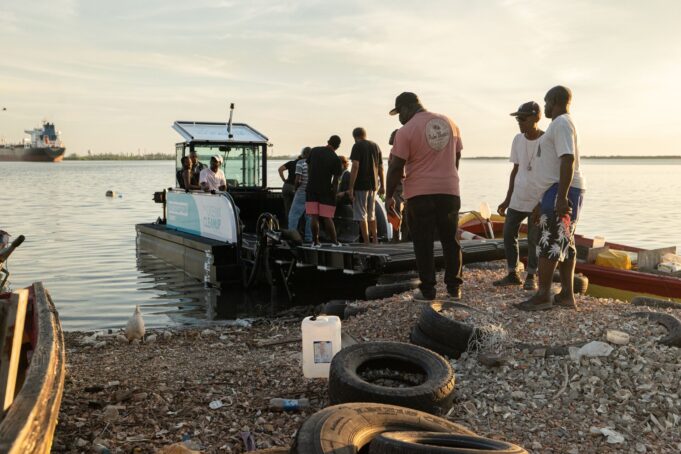
We will also pilot our newly developed Interceptor Tender, a modified version of German firm Berky’s Aquatic Weed Harvester. The Interceptor Tender can remove and transport up to 5.5 m3 of debris and will initially service the first three sites. Extractions will be coordinated according to a master schedule, with offload of each haul completed at a newly built debris collection platform. From the offload site, local waste collection agency Recycling Partners of Jamaica will gather and take debris to a managed landfill. We are training local operators Clean Harbours Jamaica to handle the cleanup efforts. This group will eventually assume responsibility for operation of all Interceptor venues in Jamaica.
Phase 2: Eight Additional Interceptor Barriers
Upon completion of a successful test period (Phase 1), Phase 2 will commence with installation of Interceptor Barriers at the eight remaining gullies, plus the addition of Interceptor Tenders to service these sites. During 2022 we anticipate reaching a significant volume of waste extraction; forecasting that by end of Phase 2, ongoing debris removal at all eleven gullies can amount to more than 900 metric tons per year.
